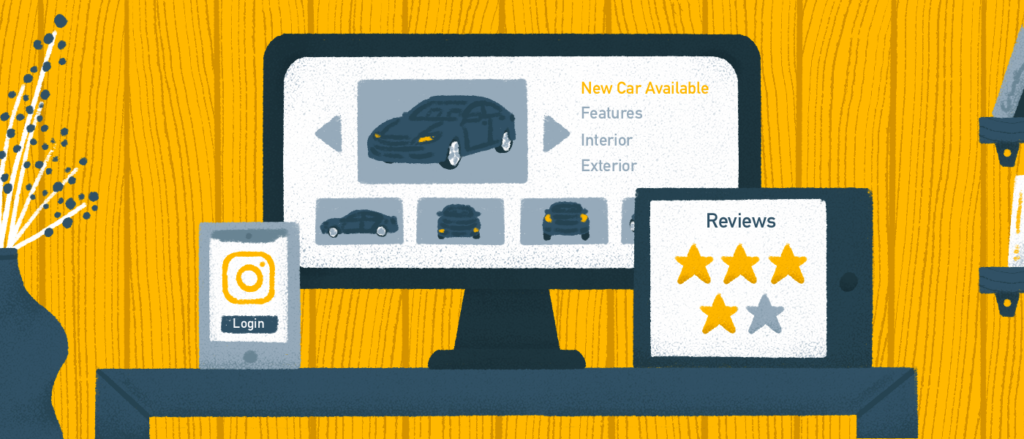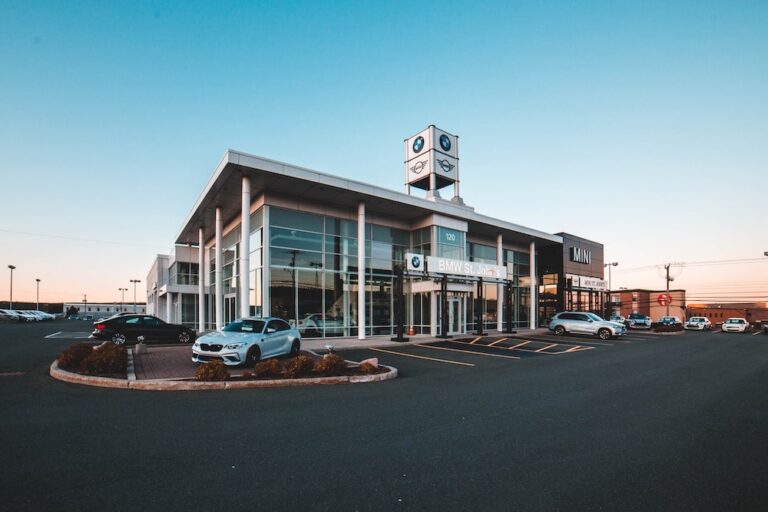Talk to Sales: (401) 200-6026

An auto dealership marketing plan can make or break your business. Here are some things to help your plan succeed.
Times have changed. An auto dealership marketing plan looks a lot different from how it did even just a few years ago. Most notable among the differences in customer behavior is the switch from the in-person consumer experience to online shopping. Especially in the wake of the pandemic, some people go through the entire car-buying process without ever setting foot in a dealership, which means that marketing plans need to adapt.
But where to begin? Which aspects of your auto dealership marketing plan need to be adjusted to meet this new kind of buying behavior? If you’re keeping up with the times, hopefully, you won’t need to make too many changes. Still, if you’re just getting started with an auto dealership marketing plan or if you’re in the process of making updates, there’s a lot to learn–especially about digital marketing.
While an auto dealership marketing plan could include a number of things, we’ve narrowed it down to some of the essentials. You can always add on if you need to.
7 Points of focus for your auto dealership marketing plan
1. Dealership website
With so many people shopping online now, your dealership website absolutely must be up to date and functional. Your customers expect a sleek, stylish website that’s easy to navigate and shows your entire inventory. For that matter, include as many pictures of each vehicle as you can, showcasing them from all angles, and perhaps even a virtual tour of each vehicle so customers can see the features both inside and out.
A critical component to this part of your auto dealership marketing plan is to ensure that the website works well on mobile devices. A large percentage of people use their phones for all sorts of things, including buying cars. While that may seem unusual to anyone who’s been in the business a long time, it’s the way things are going, and you’ll want to adapt so you don’t get left behind.
2. Platform to display inventory
Developing a website from scratch to showcase your inventory can be expensive and difficult to maintain. Don’t put yourself through that. Instead, use platforms like AutoRaptor to show off your goods. These platforms are already designed to meet the industry’s ever-changing needs, and most of them integrate seamlessly with your base website. This means you won’t need to worry about updating software or code, nor will you need to spend thousands of dollars on a developer to do it for you. Inventory platforms are run by third parties who handle all of the updates and changes you need to stay current.
3. Social media presence
If you’re not using social media to connect with your customers, you’re missing a big opportunity to reach people. People spend a lot of time on platforms like Instagram and Facebook, browsing content and leaving comments. This is a perfect opportunity to engage with people on a personal level. It’s not enough to just be on these platforms, you’ll want to be active, responding to comments, questions, and concerns, updating your content with current inventory and other offerings, and providing content that adds value to the customer experience.
4. Online reviews
In addition to social media, people love to leave online reviews of a shopping experience, whether good or bad. No matter which way the reviews go, it’s helpful to stay on top of responding to these reviews. Not only can your responses help customers better understand your business, but it also shows others that you care about your customers’ experiences and want to engage with them personally.
5. Blog content
Using search engine optimized (SEO) blog content can help drive traffic to your website, which will hopefully translate into more customers. There are plenty of third-party vendors who specialize in this area, once more saving you time and money on expertise that may not come naturally to anyone at your dealership. By providing valuable content, you enhance your auto dealership marketing plan significantly simply by giving people meaningful information that matters to them.
6. Text messaging
For better or worse, texting has become perhaps the most popular form of communication, including business transactions. People like to receive texts because they have time to process information and respond on their own time rather than having to assimilate data and answer on the spot. If you think texts will annoy people, think again. Most would much rather get a text than a phone call these days.
7. Community involvement
Finally, if you’re a small, independent retailer, community involvement can make up a large part of your auto dealership marketing plan. Doing so adds a personal touch that larger dealerships can’t provide, and it brings about customer loyalty and satisfaction in ways that impersonal, distant interactions cannot.




